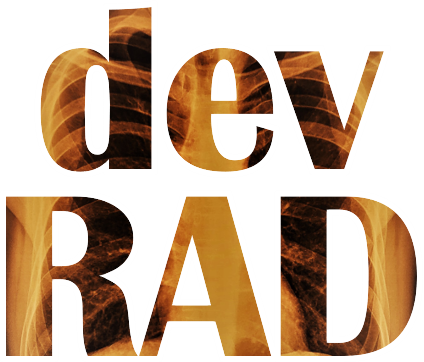The story does have a happy ending but I have had a weird relation with this exam, to be very frank. It started when I decided, in a moment of fey madness, that I will “Get the FRCR degree” even though I had no idea what it meant or entailed. I still do not understand where my conviction came from given that I had never known anyone who did it. All the same, in 2018 I embarked on this long and arduous journey with a lot of hopes and dreams and zero planning. The pandemic certainly did not help initially as it messed up my entire timeline but eventually it turned out to be a godsend because it was only after covid that we got an examination centre in India and things began to move for me.
I’ll interrupt my beautiful flowing prose to interject with an important point: This is not my FRCR preparation guide. That’s a whole different article here. This is best described as a rambling appreciation post in which I talk about my tryst with this exhausting exam where the stress of preparation was matched only by the profound relief I felt after passing and many people who helped me along the way (and can help you too, if you ask nicely!). You may find out something interesting here that can help your preparation even though that is not the intended purpose but having said that, if you are still here, read on!
If you are a UK trainee (or from a similar system), the FRCR exam and it’s preparation is baked into your residency and you learn about it regularly from other trainees, fellows and consultants. That is, however, not the case if you are an international medical graduate (like me) and the biggest initial roadblock was lack of information.
The beginning
This problem was solved for me (and several hundred others, actually) by a certain Dr. Sandeep Singh Awal. If you are an IMG interested in the FRCR, then you have probably already heard of him (or his website/Social Media RadiologyVibes) because he is very active in websites and forums that deal with FRCR preparation. It was his Telegram group dedicated to the First FRCR where I discovered how I should be preparing for the Anatomy Exam. I was amazed to discover that he was organising daily anatomy practice sessions back then (and he continued to do it for many years).
Bolstered by the information I got there, I did my own research and finally booked my seat for the Anatomy exam in Hyderabad. Cafe Radiology and Weir Abraham’s Atlas were the only resources I used for anatomy. I also found another radiologist, Dr. Nikhil, who shared my enthusiasm for this exam, (he actually runs a great page on instagram and goes by @keyradiologist) and together we prepared for the next few weeks. I passed with great scores and let it get to my head because I remember telling my wife “Oh, I didn’t realise the exam would be so easy…”
Little did I know that the looming physics exam would turn out to be a nightmare. I always fancied myself a “physics nerd” in high school and was actually looking forward to all the fancy “MRI Physics”. But to reach MRI physics, you have to overcome X-ray physics and please don’t think this is a hyperbole but I almost died trying to understand X-ray physics from Farr’s. Of course, that was a mistake as I realised later on, but I was stubborn and had committed myself too deeply to change my plans. I still passed but I was not unscathed – the physics exam had scarred my psyche. (If you want to know how I think you should prepare for your First FRCR exams, here’s my First FRCR Guide)
The deception
The FRCR 2A is a deceptive exam. For an exam that is supposed to test your radiology knowledge (and make no mistake it does so thoroughly), it has no images. After I got over the initial shock of demonstrating radiology knowledge without images, I set about gathering information about the exam. In this too, I was aided by excellent articles from Cafe Radiology, Radiology Vibes and SRT. I also received excellent advice from Theradiologygirl on instagram, a radiology registrar from the UK, who was kind enough to share resources as well as her perspective on both 2A and 2B exams. You can check out her account for dedicated posts on 2A and 2B exams – you can learn from her insights too!
My favourite resources were the textbook I used in Residency (Core Radiology) and the epic book by Prometheus Lionheart (Crack the Core). For practice questions, I leaned heavily on frcrexamprep and the BIR app. Using the NICE guidelines or the BTS guidelines (for lung nodules) was quite helpful because this exam is more clinical than you’d expect and it is always a good idea to understand the context in which clinical decisions are made in this unfamiliar system. Once again, I did well to heed Dr. Sandeep Awal’s warning that no matter how hard you prepare for the exam, it will surprise you. And it did, though not quite the way I expected it to – some questions were definitely harder than I expected and they were stacked together which hit my confidence but once I survived those, there were a surprising number of easy and reasonable ones too.
Once again, I passed with happy scores but I’ll be the first to admit that I had no idea what to expect until I received the email with good news. Some of the questions were so traumatic that I had no idea if I got them right, even after reviewing my books and notes after the exam. In case you have a craving to know everything I think about preparing for this exam, there is a FRCR 2A guide on my website.
The finale
The Final FRCR is a fantastic exam. Stressful beyond imagination, yes, but still fantastic because if you (somehow) forget the pass/fail aspect of this exam, even preparing for it makes you a better radiologist. The exam is designed to test you thoroughly and if you are caught unprepared, all your weaknesses will be laid bare for your viva examiners to pick apart.
It also comes with fixed pass-marks. Let me clear that up: the first FRCR and 2A are semi-competitive exams in that the pass marks are dynamic and vary each session. depending upon a complicated formula that calculates the marks taking into account the difficulty of the questions (according to exam setters) and the scores of the candidates. The FRCR 2B does not believe in all that and has clear pass marks for each of the components.
The scariest component is the Viva partly because it involves a lot of quick thinking on your feet trying to answer questions about an alien system but mainly because vivas are truly terrifying. For this reason I pulled out all the stops and asked a whole bunch of people for advice. I am truly grateful to several consultants who took time out and arranged practice viva sessions for me. Dr. Sameer Raniga (a great mentor and excellent educator who goes @smarad on twitter), Dr. Vikas Shah (educator on all social media and Radiopedia Editor), Dr. Yasser and of course, Dr. Sandeep Awal, who not only took out time for viva sessions, but was always available for doubts and advice. He always has been an excellent educator and guide but for me, personally he is now an inspirational figure who I regularly learn from and also a dependable friend.
There are amazing free sessions that you should make use of – weekly sessions by Dr. John Curtis, Dr. Sami Khan, FRCR 2B viva sessions by Radiologyvibes (arranged by Dr. Sandeep and his team). Even if you do not get the “hot seat” experience, observing others take the viva was also a learning experience for me. Dr. Sandeep Awal can be also be requested via email or DM for private sessions – He provides excellent feedback which I have personally benefited from.

And lastly, I had Revise Radiology Study groups where I got a lot of practice twice every week. It’s a great opportunity to see see how certain people have better technique when dealing with certain situations and learn from them. I learned a lot from all of my colleagues but I learned the most probably from Dr. Jamanjit Kaur who is a terrific radiologist and who I had lots of vivas to practice with.
Next up in level of difficulty IMO is the Rapids. They need a LOT of practice, period. I for one was not happy before I had bulldozed through at least 50 sets of Rapids before I acquire a reasonable measure of confidence. There are two important factors that determine your performance: Your ability to detect abnormality and Your ability to confidently call normal. I came to understand through my own (and also others’) mistakes that Rapids is less about knowledge and more about your mindset. Practicing undoubtedly helps to develop your own checklist so that you do not miss findings but rapids are also about trusting yourself. I think it will be worth your time to sit down and calmly teach yourself the following, “If you are not 100% sure that it is abnormal, mark it as normal.” It may go against your instincts, but for this part of the exam, this is gospel. Practice lots of rapid sets to recalibrate your instincts and recognise the abnormality with conviction – no half assed abnormality is allowed to be in the rapid sets. Going through Dr. Imran Lasker’s free course was very helpful and I recommend it. It is also worthwhile to discuss certain problem areas with people with more experience – I am so thankful to Dr. Ameya Kawathalkar who had my back with all the MSK radiographs I threw at him and once again, Dr. Sandeep Awal who gave me superb advice right at the beginning of my prep that instead of adopting publicly available checklists as they are, I should modify them based on my own mistakes.
The Long Cases are easiest to adapt to because they are similar to the exam format in the board exams in most countries but still adequate practice to ensure you know what to expect, manage your time and prepare for common cases. I used only Revise Radiology for Long Cases and Rapids and I have covered their 2B Combined plan in details in my review.
Epilogue
My FRCR journey taught me a lot and I hope this article helped answer any doubts you may have had or even more impressively, taught you about a question that you need to ask but hadn’t thought of yet. You can always get in touch with me if you haven’t had enough and need even more information about somethigng.
Disclaimer: As always, I would like to point out that there are a few links here which direct you to some service or products. The opinions are my own and I only endorse products and services that I personally like and in this case, used myself.When you purchase through links on my site, I may earn an affiliate commission. Sometimes you may get a discount but you never have to pay more.


Very useful for insight of frcr